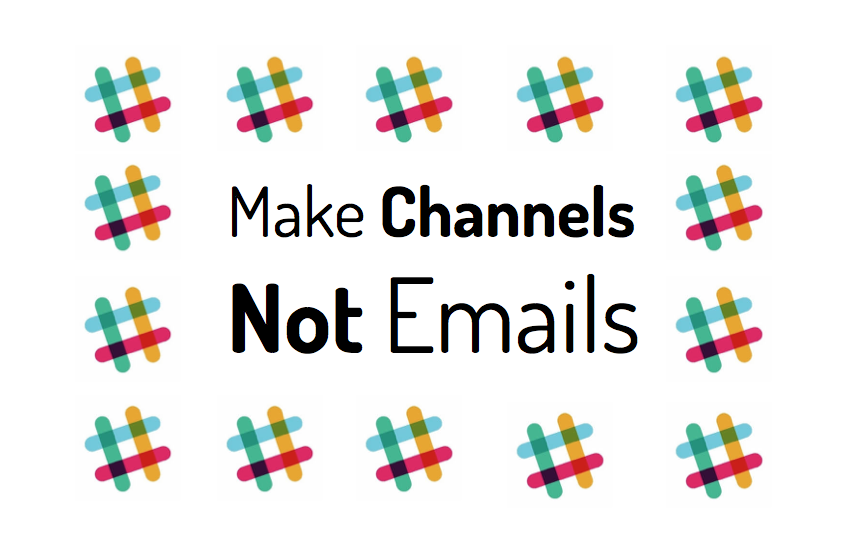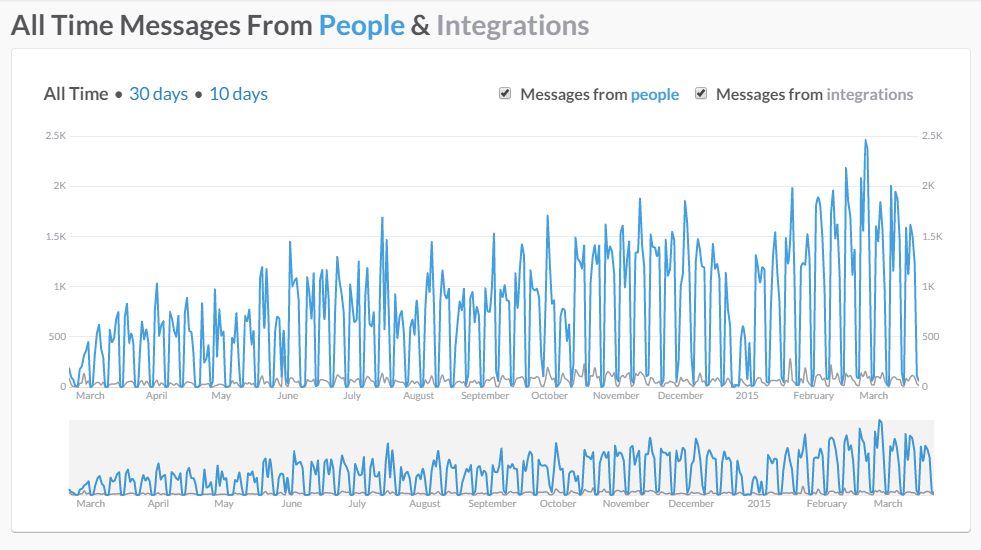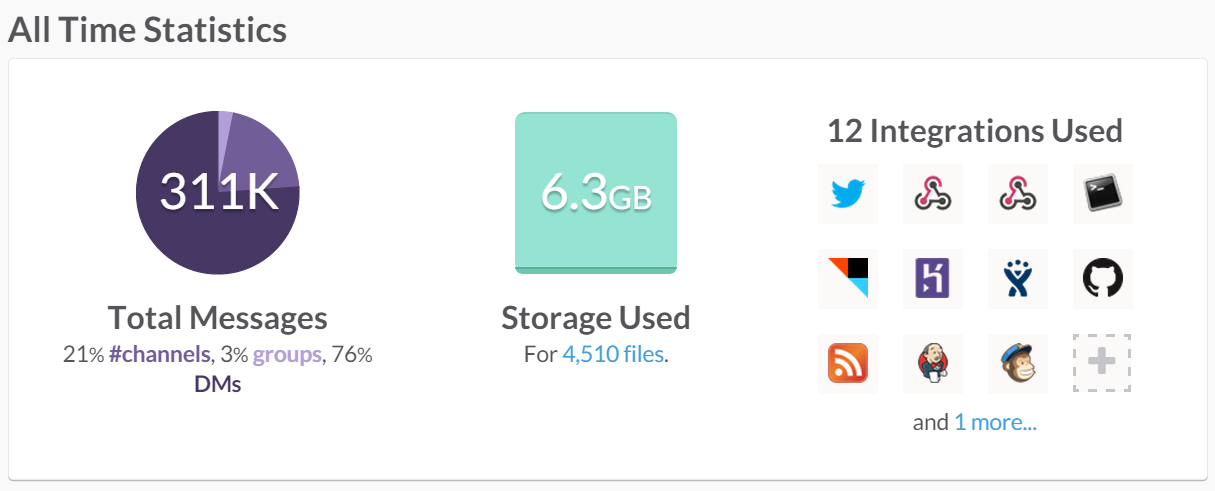Why your company should be Slacking
Written by Mark Vletter on 30th April 2015
No we don’t need a new tool for communication
When Jurrien – whose advice I always value – said to me he found “an awesome tool for team communication” I was sceptical. With Email, Google Hangouts, WhatsApp, Telegram, LinkedIn, Facebook and Twitter I was tired of new means of communication. When Bas, my colleague in South Africa, said he found “a tool that would change team communication”, things got interesting.
They both gave me a demo and all I could see was IRC in a web interface. Turns out I was right, Slack is exactly that. IRC, but they kind of put the thing on steroids. More important? They took away the geek part. But was that really enough?
What is Slack?
Slack is a tool for (internal) communication. Does not sound exciting right? It’s far more easy to explain what changed within the company when we started using Slack.
We stopped emailing each other, we stopped using WhatsApp, we stopped using Google Hangouts and we started communicating in a more efficient way.
Furthermore, Slack can integrate with a load of third party tools. Third party tools can automatically forward information to Slack, like tweets to your Twitter account or a summary of the performance of your last email campaign. It also automatically displays information, so a Google Drive document can be opened with one click and a Youtube video can be played directly in Slack. This makes the tool very efficient.

Why you might want Slack
In my opinion there are some basic things that go wrong in group communication.
The reply all email tree
You send out an email, to a group of three, everybody does a reply all, then someone decides “John” should be in on this as well. He forwards the email to John and in the meantime the email reply all debate continues. John’s feedback is sent to Robert, but the feedback is outdated because the conversation continued and, before you know it, 70 emails have been sent, no decision has been made and everybody has lost the overview.
Which container did we use?
The fun really starts when people set up a WhatsApp group, then someone says he prefers Telegram, because it can be used on a computer and “he can type better”. The conversation shifts and then you find out Nicky does not have Telegram, so she is not in the loop anymore. You shift to Twitter and two months later it is up to you to find the information again. But in which digital container is the content?
How Slack solves this
Slacks solves both issues. Everybody can create a public or private group, which is called a Channel. Everybody can invite new members to a channel and those new members can “read back” what has been said in chronological order (which turned out to be especially useful for new colleagues). Channels can be set up temporarily and archived once they are no longer useful. Furthermore anybody can subscribe to a public Channel he or she is interested in.
Great, Slack solves things, but the impact was bigger than just solving an issue.
Impact of Slacking
The impact of Slack on our organization has been huge.
Effective communication
First of, we have been communicating more effectively. We have one tool for all internal (business) communication which is up to date, fast and well integrated with other tools.
Up to par
Second, everybody in the company is more up to par. You can easily join in on the conversations you are interested in and share information with a group that needs to have that information.
Smarter decisions
Third, decisions are smarter. This is because people who are interested in a topic and thus add value to a topic, can join in on the conversation making it richer. Rich information enables smart decision making.
Transparent
Information is more transparent. Email, WhatsApp groups etc are closed data containers and can make it feel like people are not invited to join in. Slack enables companies to be open and transparent.
Peace
Finally Slack gave me some peace and quiet. I have uninstalled loads of apps, communication has been streamlined and I don’t have business chatter in a tool I mainly use for private communication.
 Our team size has doubled every 20 months over the last few years so Slack use has been increasing too.
Our team size has doubled every 20 months over the last few years so Slack use has been increasing too.
Lessons learned
Sounds perfect right? Well, it is a lot better but it is not perfect. Let’s take a look at some lessons we’ve learned.
Start small
This is a new tool. People don’t like new stuff, and people will react like I did the first time I heard about Slack. We started with a small team – the customer love team – who were searching for something better and tech savvy. Within two days they were not only enthusiastic, but they had convinced our advice team to join as well. They in turn forced our dev team to become Slackers. All it took was “it has an open API”. Before the week was over my dev team was evangelizing Slack to other companies. A dev team that turns sales team is rather exceptional. Did I mention this is a good tool already?
Help people remember
If you do get emails from colleagues which could have been a Slack messages, help them remember. This will go both ways. It will streamline communication for both yourself and for them.
Unfollow
You will get a shit load of channels. Follow only the ones that need to be followed. Otherwise you might feel a little overwhelmed at times.
Turn off notifications on the smartphone
Notifications are great, but not on a smartphone. Smartphones are not meant to be typewriters and your colleagues usually give you tasks for which you need a laptop to do them efficiently. Furthermore I will get ideas in the weekend which I then DM to one of my colleagues. Your colleagues should not keep you awake at the strangest hours.
Turn off notification on desktop as well
Notifications, like email popups are useless. Your attention is hardly ever necessary in real time. I do have Slack running on another screen, but I does not hammer me for attention. It gets my attention when my current task is finished.
 Some Slack usage stats.
Some Slack usage stats.
To sum it up
I would like to sum it up with a small summary of the above to help you get going.
Slack is a great tool, but you’ll only find that out by using it. Start with a small tech savvy team and let it spread based on user demand. Especially in the beginning help people remember that Slack can be used instead of email or other tools.
If your information is not secret, create a public, not a private channel. Following it is a choice, but a choice your colleagues can make themselves, instead of you making it for them.
Be aware of the fact that notifications are distracting and disable them if they bother you.
That’s it. Happy Slacking and if you like this article, feel free to share it so other people can be less busy as well.




Your thoughts
No comments so far